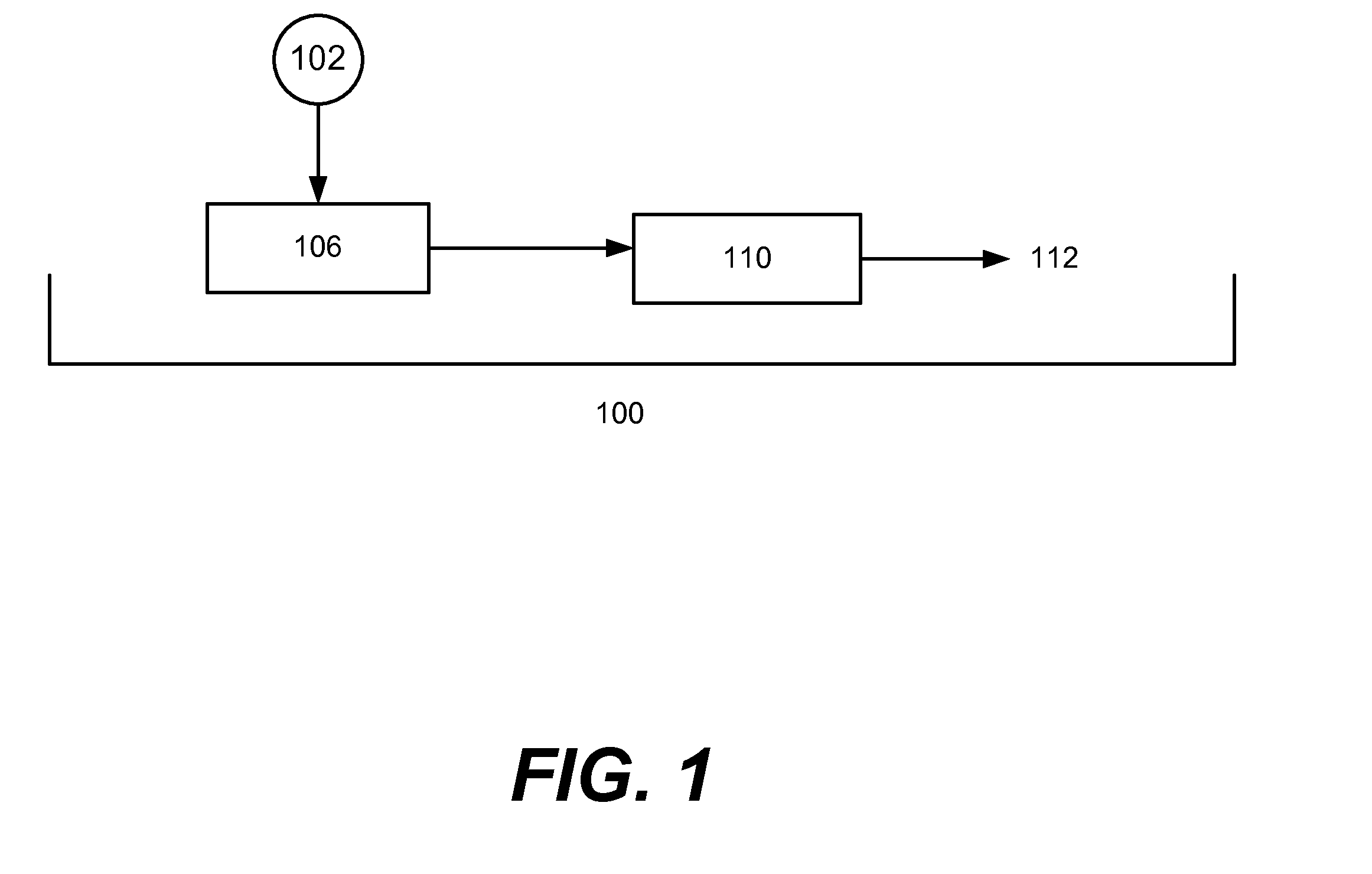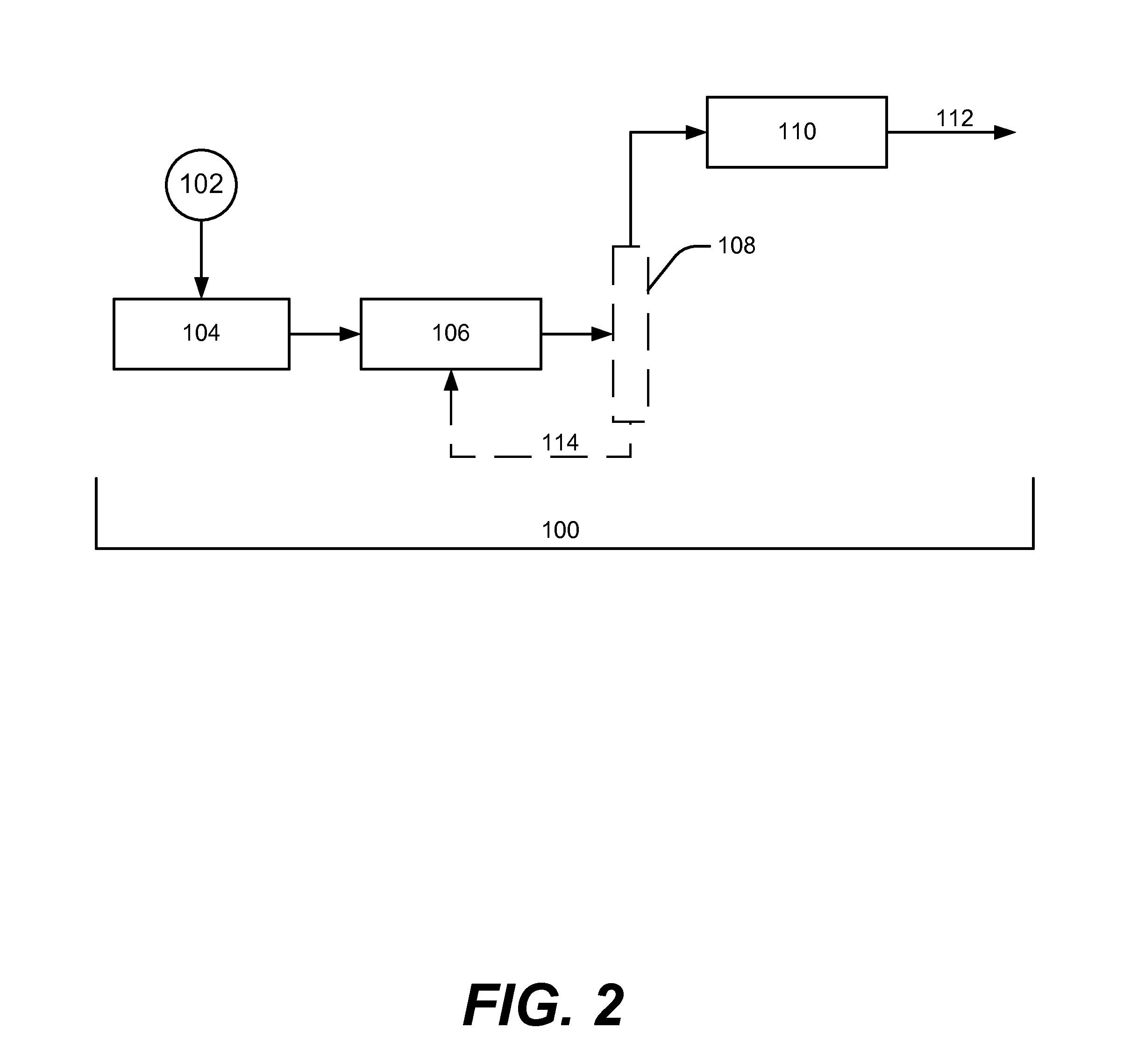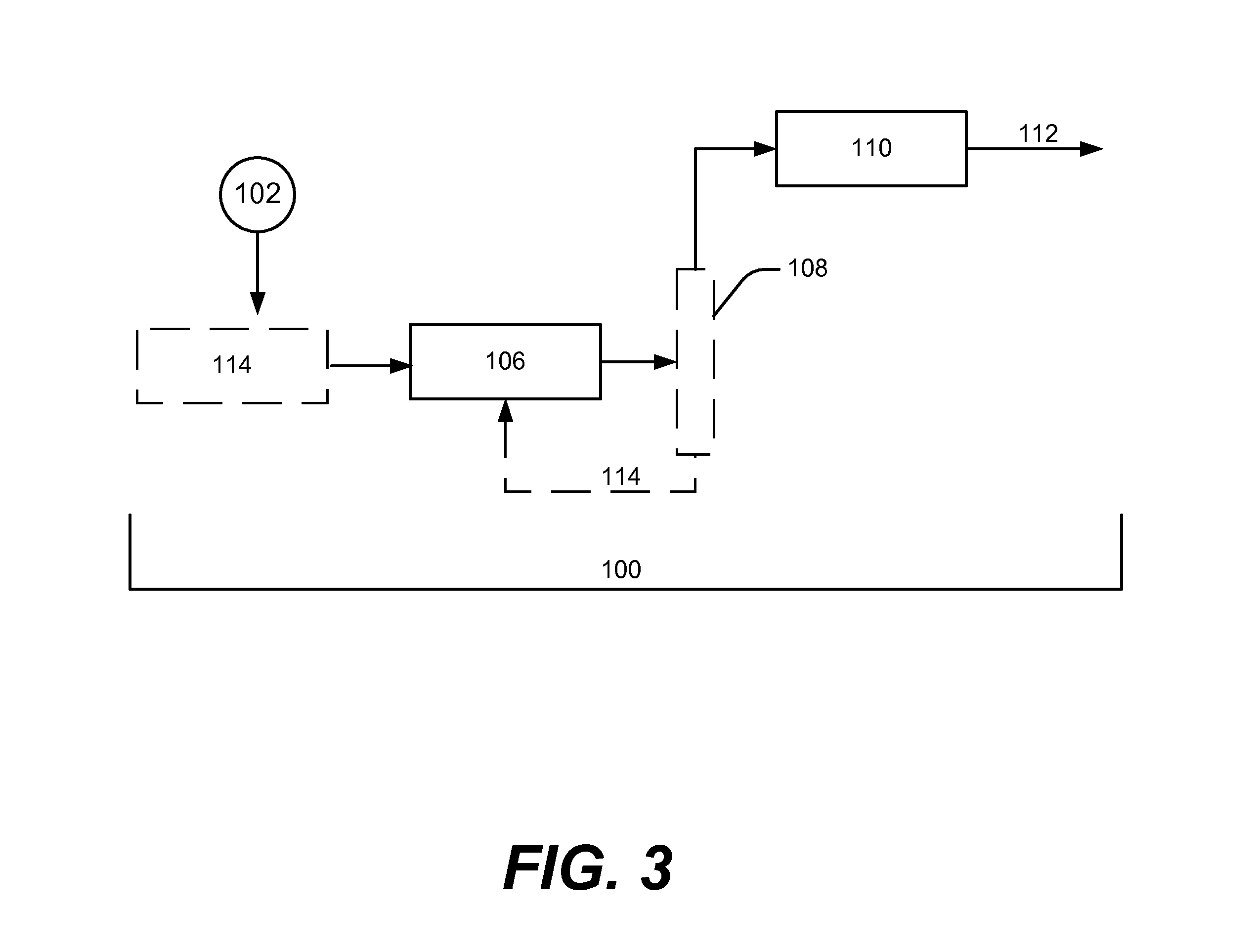Biofuels via hydrogenolysis-condensation
a technology of hydrogenolysis and biofuels, which is applied in the direction of biofuels, fuels, hydrocarbon oil treatment products, etc., can solve the problems of increasing the loss of desirable hydrocarbon products, difficult to compete with the use of traditional resources, such as fossil fuels, and high cost of the process used. , to achieve the effect of facilitating the hydrolysis reaction and easy oxidation
- Summary
- Abstract
- Description
- Claims
- Application Information
AI Technical Summary
Benefits of technology
Problems solved by technology
Method used
Image
Examples
examples 1-14
Batch Hydrogenolysis and Aqueous Phase Reforming
[0098]In treating an aqueous mixture of carbohydrates, the carbohydrates can be “reformed” under appropriate conditions to produce hydrogen, as illustrated by formation of isopropanol (i.e., IPA, or 2-propanol) from sorbitol in Eq. 1 shown above. Alternately, in the presence of hydrogen, polyols and mono-oxygenates such as IPA can be formed by hydrogenolysis, where hydrogen is consumed rather produced, as shown in Eqs. 2 and 3 above.
[0099]For hydrogenolysis pathways where a source of hydrogen is available (e.g., refinery offgas, or direct H2 production via renewable or non-fossil energy), the yields of biofuels may be increased via avoidance of loss of bio-based carbon as CO2. The current process provides optimized conditions to produce polyols such as propylene glycol (PG) via Eq. 2 rather than produce yield loss to CO2 via “reforming” reaction in Eq. 1 for those cases where a H2 source is available or can be economically provided. Th...
examples 15-24
Acid Condensation of Hydrogenolysis and APR Products in a Catalytic Pulse Microreactor
[0104]A GC injector was loaded with 0.05 grams of ZSM-5 acid condensation catalyst, and held at 375° C. One-microliter of a carbohydrate / water mixture was injected into the catalyst bed, to examine formation of liquid fuel products. The catalytic injector insert was followed by Restek Rtx-1701 and DB-5 capillary GC columns in series, to resolve hydrocarbon and aromatic reaction components via temperature-programmed analysis.
[0105]Mixtures of pure components EG, PG, glycerol, sorbitol, and IPA were prepared, to examine plausible yields of liquid biofuels via condensation over ZSM-5. Unconverted mass corresponded largely to coke deposition (requiring burn-off via periodic regeneration), or loss to light gases.
[0106]The extent of product formation for fixed sample injection volume was measured via integration of area under the GC FID response, and dividing by the effective weight fraction of sorbitol ...
example 24
Direct Hydrogenolysis of Biomass
[0110]For example #24, 3.59 grams of sugar cane bagasse solids (5% moisture) were added directly to the hydrogenolysis reactor with 60.1 grams of deionized water, to demonstrate concerted hydrolysis of biomass with hydrogenolysis of the resulting hydrolysate. 0.924 grams of Ni / SiO2-1 catalyst were used, for reaction conducted with 5300 kPa of H2. Temperatures were staged for 2.5 hours at 170 C, 2.5 hours at 190 C, and 22 hours at 210 C, to allow the more readily hydrolysable C5 sugars to be extracted and hydrotreated at a lower temperature, to avoid degradation to heavy ends. Results were reported as Example #24 in Table 4, and for the composition data of Table #5. Yields were two fold greater than direct feed of sorbitol to acid condensation, despite the fact that a substantial portion (up to 30%) of bagasse is lignin, which is not expected to be converted under the conditions tested.
[0111]The results show an ability to convert biomass to liquid biof...
PUM
 Login to View More
Login to View More Abstract
Description
Claims
Application Information
 Login to View More
Login to View More - R&D
- Intellectual Property
- Life Sciences
- Materials
- Tech Scout
- Unparalleled Data Quality
- Higher Quality Content
- 60% Fewer Hallucinations
Browse by: Latest US Patents, China's latest patents, Technical Efficacy Thesaurus, Application Domain, Technology Topic, Popular Technical Reports.
© 2025 PatSnap. All rights reserved.Legal|Privacy policy|Modern Slavery Act Transparency Statement|Sitemap|About US| Contact US: help@patsnap.com



